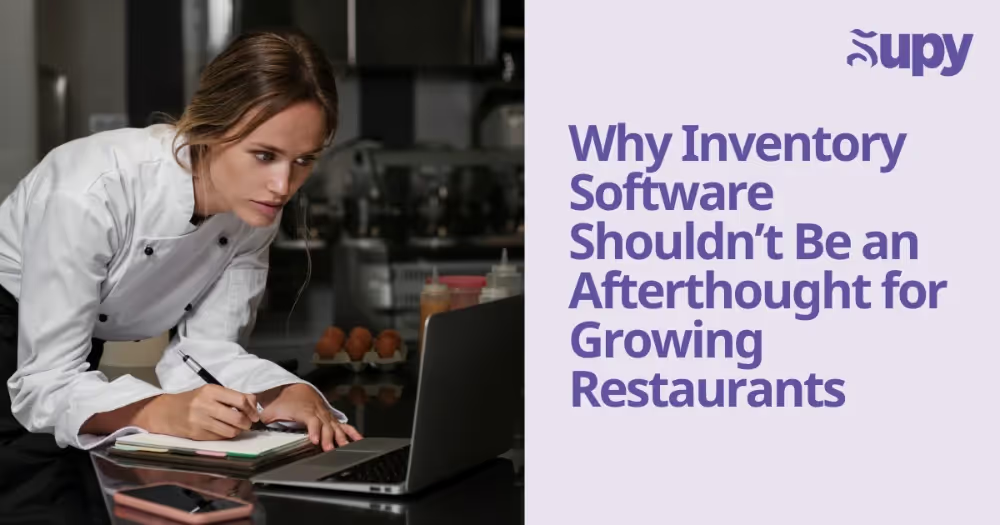Why Inventory Software Shouldn’t Be an Afterthought for Growing Restaurants

When you're scaling a restaurant group, there’s always a lot in motion - new sites, POS upgrades, supplier changes, team training. And in the midst of it all, inventory software often ends up on the “later” list.
That’s completely understandable.
But from what we’ve seen working with multi-site operators around the world, the groups that prioritise inventory earlier unlock a level of control, clarity, and confidence that makes every next move easier.
Here’s why it pays to make inventory a priority - not an afterthought.
1. You Can’t Fix What You Can’t See
Opening new venues, expanding delivery channels, refining your menu - these are all smart growth moves. But they’re even more powerful when backed by clear data on what’s really working.
Inventory software gives you accurate COGS, live stock levels, and true dish-level profitability. So you're not just scaling - you’re scaling confidently.
Pro Tip: Use inventory data to benchmark site performance before you expand. It helps you double down on what’s working - and fix what isn’t.
2. Revenue ≠ Profit
It’s easy to celebrate revenue growth, especially with a busy delivery channel. But platforms like Uber Eats and DoorDash can quietly eat into margins - with commissions of up to 29%.
We’ve seen cases where top-line sales look exceptional, but once delivery costs and food waste are factored in, the site’s actual performance tells a different story.
Inventory tools like Supy make it easy to connect the dots between sales, channel mix, and true profitability.
Common Pitfall: Relying on POS revenue alone without layering in real-time cost data.
3. Implementing Inventory Before Your POS Makes Life Easier
Many operators naturally start with POS - but in reality, building your recipes and costing in Supy first can actually make your POS rollout more accurate and efficient.
We’ve seen operators build out their menus in Supy, then realise they need to adjust their POS setup to match portion sizes or modifiers. Doing it the other way round often leads to duplication and manual fixes later on.
Pro Tip: Let Supy give you market insight on which POS brands are best in practice. We know who is well-loved and who is churning clients and will always guide you towards the provider that we think best fits your restaurant operation.
4. Scaling Without Inventory Control Is Expensive
Margins matter more with scale. What feels like a small loss at two locations becomes a six-figure issue across twenty.
That’s why so many fast-growing brands use Supy to set their systems early - locking in visibility, consistency, and margin control before things get messy.
Common Pitfall: Assuming you can plug inventory in later without disruption. It’s much easier to embed early and build from there.
5. Change Management Momentum Doesn’t Last Forever
If you're reviewing tech - whether that's a new POS, kitchen software, or anything else - it's a great time to introduce inventory too. Your team’s already thinking about workflows. You're already in decision-making mode.
We’ve seen how effective it is to align these changes, and our team supports clients in stitching these systems together smoothly.
Pro Tip: Supy integrates with all leading POS systems - and our team can help you roll out both, with minimal disruption to your ops.
Final Thought: Make Inventory a Priority. Not an Afterthought.
Every growing restaurant group has to prioritise. But when inventory is pushed down the list, it doesn’t go away - it just creates more uncertainty down the line.
The operators we work with aren’t behind. They’re ahead of the curve for making inventory a strategic pillar - not just a back-office task.
If you’re thinking about it, now’s the perfect time.
Need help rolling it out? Supy’s team of ex-operators and F&B experts are here to help - bringing practical, hands-on support to get you live fast. Book a demo here.







